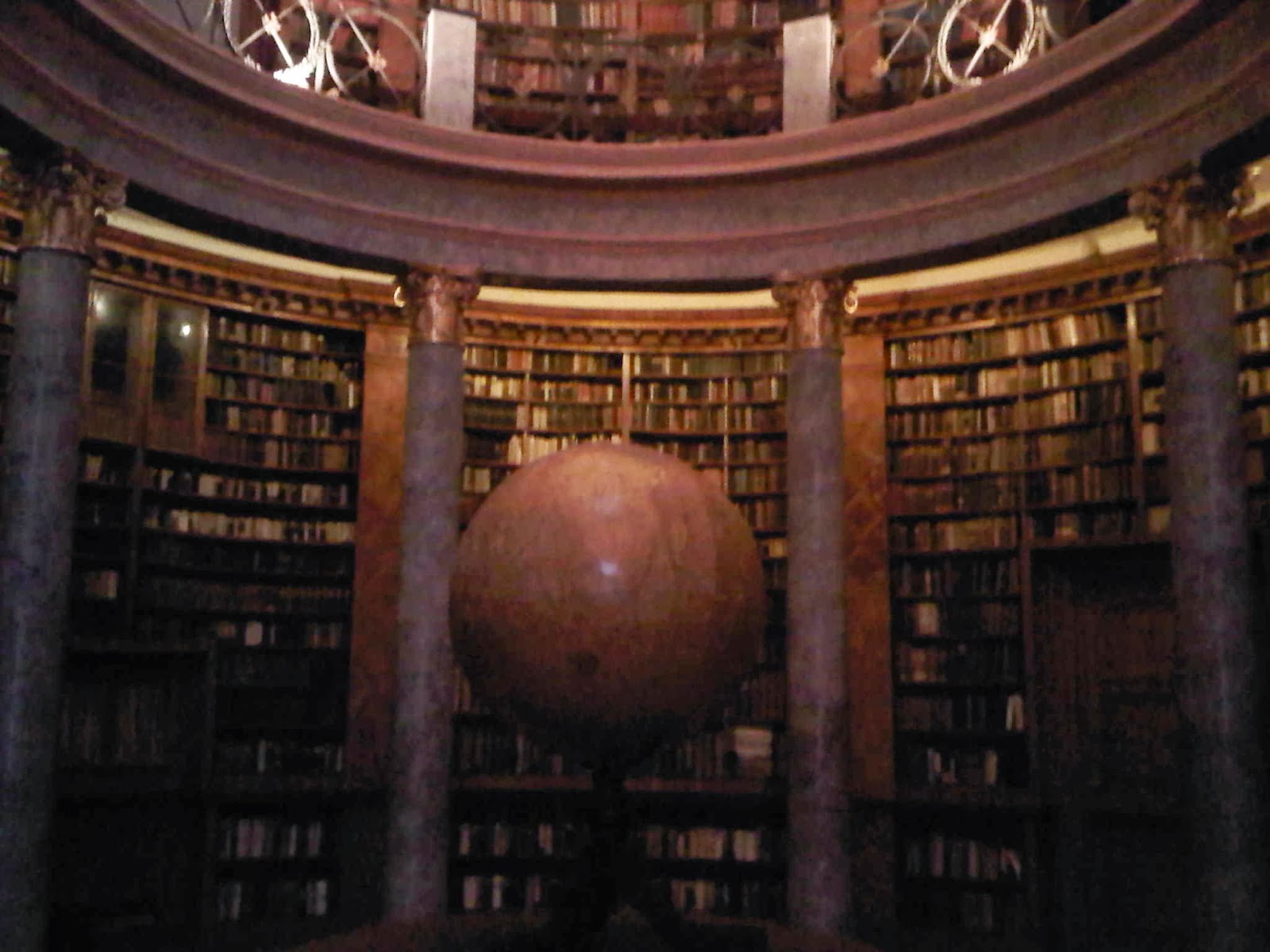 |
| You get up to the top of the wall and this is what you see... |
 |
| Then you turn around and this is the view you get... |
 |
| The basilica. If you go downstairs, they have a collection of Habsburgs' hearts. That's how they were interred. |
 |
| The courtyard, as seen from the cloisters. |
 |
| The fancy door to the basilica |
 |
| "Every fancy, gigantic library must have a gigantic globe." That's written somewhere in the Bible, look it up. |
Catholicism has had a bumpy ride in Hungary.
Efforts to spread the religion among the Magyar tribes were intensive,
but difficult at times, just ask St. Gellert, who was stuffed into a barrel and
thrown from a hill that today bears his name for preaching to the heathens.
Hungary became officially Catholic after Istvan’s coronation, by
order of the pope at the time. The kingdom was on the frontier of Catholicism, just before the Great Schism. The kings put non-believers under the sword and missionaries spread the word. All that work was almost completely destroyed by the Mongol hordes. Then Hungary was occupied by the surging Muslim
Ottomans on their way to Vienna from Turkey.
After the Turks were pushed out things began to look a bit more peaceful. Nope! Kidding! The Reformation had begun by that time. In the coming years, uprisings against the ruling Habsburgs were more religious in tone than nationalist. The Catholics from Austria often fought Lutherans and Calvinists from other corners of the empire – who in turn sided with the dreaded Turkish heretics against those Austrian papists.
Much, much later, of course, atheist communism also had its day in Hungary, closing churches and imprisoning or executing clergy.
Through it all, the Archabbey of Pannnonhalma has stood the test
of time, and withstood the challenges of, well, being located in Hungary. The Benedictines
built their abbey in 996. Since then, it has added a basilica, a
beautiful library, a boarding school, even a winery – building a tidy little business in the process, while also being far more socially palatable than tithes or indulgences,
The Archabbey largely was spared the Mongol destruction, but was occupied (not thoroughly pillaged, however) by the Turks. This is in stark contrast to what happened at Székesfehérvár,
the kingdom's old royal capital and basilica. Hungarian kings and queens were crowned and
buried there for centuries, until the Turks decided it was a good idea to use it for gunpowder storage and, unsurprisingly, accidently blew it up.
The Archabbey of Pannonhalma has even survived a state repression. The Benedictines were outlawed by an emperor looking to lessen Rome's influence in the Holy Roman Empire (he could have changed that name too) and make a little money from confiscated land. They were invited back by another emperor to be a teaching order. The Archabbey even kept its doors open for religious business during the Communist years, churning out graduates from its boarding school.
Over the Christmas holidays, I dropped by the Archabbey for a visit in my spare time over the holidays. The Archabbey sits on a hill in the small town of Pannonhalma. I took a train to Győr, then found the bus station, which took me to the top of the hill in Pannonhalma. The winery was closed for the Christmas holidays, but I could get up into the monastery and walk along the wall into the basilica, the old cloisters and the library.
The monastery closed early, at 4:30pm, but the bus was not scheduled to return until almost 6pm. This gave me plenty of time to wander the grounds, exposed to the cold wind on the high hill in the frigid early darkness. When the bus arrived I was almost frozen stiff. I could have hugged the driver. The monastery has survived foreign invasion and state persecution, but how it survives the cold was, at the time, beyond me.
 |
| Archabbey of Pannonhalma |
No comments:
Post a Comment